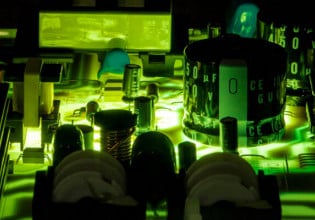Electrical Safety Code and Standards
This article highlights andividuals working on electrical circuits must use proper safety measures and personal protective equipment.
Individuals working on electrical circuits must use proper safety measures and personal protective equipment. An individual must thoroughly understand basic electrical principles, hazards, and the codes and standards associated with electrical circuit installations and maintenance tasks. Individuals who perform electrical tasks without regard to safety disregard their personal safety, the safety of any persons in the vicinity, and the equipment being worked on.
Electrical safety has been advanced by the efforts of the National Fire Protection Association (NFPA), the Occupational Safety and Health Administration (OSHA), and state safety laws. The National Fire Protection Association (NFPA) is a non-profit organization that provides advice on assessing the hazards of combustion products. The NFPA sponsors the development of the National Electrical Code® (NEC®) (see Figure 1).
Figure 1. National Electrical Code (NEC) Adoption in the different US States
Image Courtesy of ESFI
Code and Standard Organizations
The safety of an individual working with electricity in a home is the most important concern for any type of installation or maintenance task. National, state, and local codes and standards are in place to create a safe working environment and to protect people and property from electrical hazards. A code is a regulation or minimum requirement. A standard is an accepted reference or practice.
Some code, standard, and certification organizations include the Occupational Safety and Health Administration (OSHA), National Electrical Manufacturers Association (NEMA), International Electrotechnical Commission (IEC), UL® (formerly Underwriters Laboratories), Canadian Standards Association (CSA), and National Fire Protection Association® (NFPA®).
Occupational Safety and Health Administration (OSHA)
The Occupational Safety and Health Administration (OSHA) is a government agency that mandates that all employers provide a safe workplace for their employees. Safe environments are work areas free from hazards that are likely to cause serious injury. OSHA standards are enforced through federal inspections.
In electrical environments, OSHA uses NFPA 70® (NEC®: National Electrical Code® installations. OSHA also uses NFPA 70E® for Electrical Safety in the Workplace®) to help ensure safe: Standard to prove that employers have taken necessary steps to protect individuals working with electricity in certain situations.
National Electrical Manufacturers Association (NEMA)
The National Electrical Manufacturers Association (NEMA) is a national organization that provides information and guidelines for electrical equipment selection, ratings, manufacturing, testing, and performance. NEMA develops specific standards in the construction, testing, performance, and manufacture of electrical motor control equipment.
International Electrotechnical Commission (IEC)
The International Electrotechnical Commission (IEC) is an organization that establishes international safety standards for electrical equipment. Like NEMA, the IEC develops standards for motor control equipment. The IEC also issues recommendations on electrical terms, ratings, test methods, and dimensional requirements for equipment designs.
The UL®
UL®, formerly Underwriters Laboratories, is an independent organization that tests equipment and products to see if they conform to national codes and standards. Electrical equipment in homes is tested and approved by the UL for compliance and regulatory issues. UL-approved equipment and products are listed in their annual publication.
Tech Tip
Underwriters Laboratories® evaluates over 19,450 different types of products, and there are over 21 billion UL® marks in the marketplace.
Canadian Standards Association (CSA)
The Canadian Standards Association (CSA) is a Canadian organization similar to the UL® that tests equipment and devices for conformity to meet national standards.
National Fire Protection Association® (NFPA®)
The National Fire Protection Association (NFPA) is a non-profit organization that provides advice on assessing the hazards of combustion products. The NFPA® sponsors the development of NFPA 70®: National Electrical Code® (NEC) and NFPA 70E: Standard for Electrical Safety in the Workplace.
NFPA 70E® is a voluntary standard for electrical safety-related work practices. NFPA 70E® covers specific work practices required by electrical workers, both qualified and unqualified.
The National Electrical Code® (NEC) is a codebook of electrical standards that indicates how electrical systems must be installed and how work must be performed (see Figure 2). The purpose of the NEC® is to protect electrical workers and equipment from electrical hazards.
Figure 2. The NFPA® sponsors the development of the NEC®, which indicates how electrical systems must be installed and how work must be performed.
Image Courtesy of IAEI Magazine
The NEC® establishes the installation standards for all residential, commercial, and industrial electrical work and is amended every three years to stay current with new safety issues, technology, electrical products, and procedures.
In most areas, the NEC® and local code requirements are the same, but the NEC® sets only minimum requirements. Local codes, particularly in large cities, may be stricter than those in the NEC®. In the case of stricter local codes, the local code must be followed. When more specific requirements (codes) are established by local city councils, the local codes are obtained from a local building department.
Individuals working around a home should become aware of the local and state codes regarding safe installation and maintenance of electrical devices and equipment and systems.






